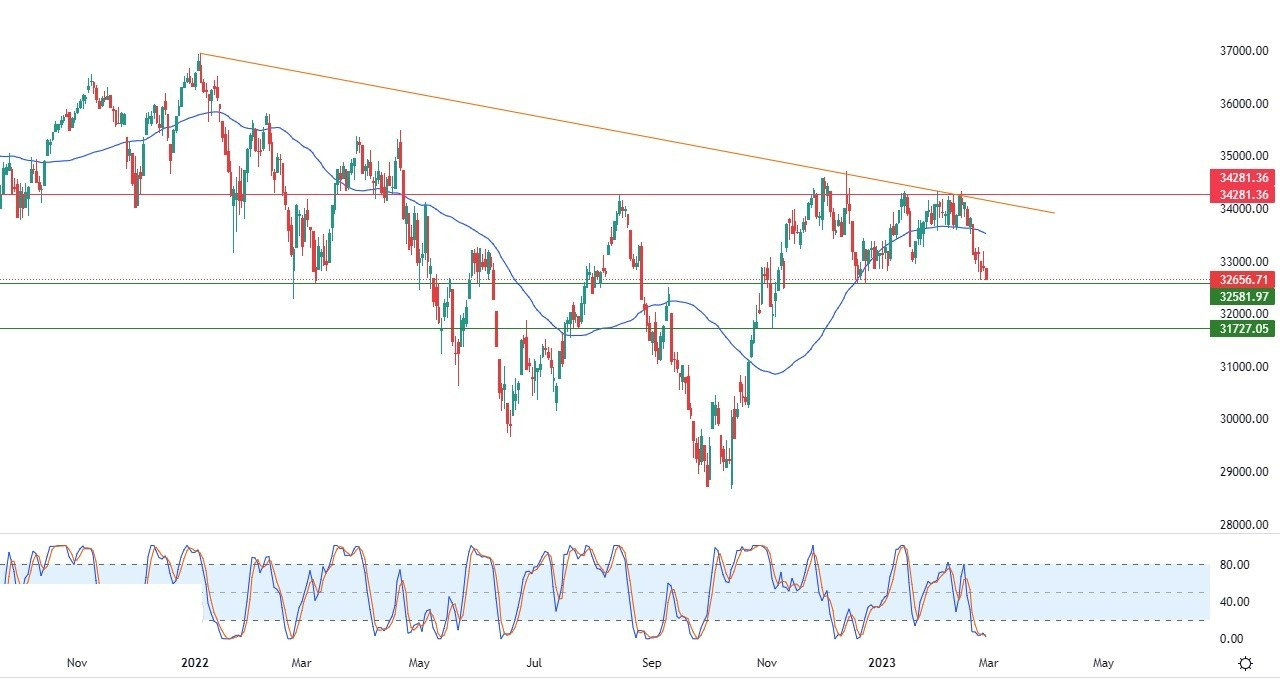- The Dow Jones Industrial Average fell during its recent trading on intraday levels, recording losses in its last session by -0.71%.
- It lost about -232.39 points and settle at the end of trading at its lowest level during the current year at 32,656.71, and this comes after a rise.
- The index decreased slightly during trading on Monday, by 0.22%.
- In February, the index declined by 4.2%, which is the largest monthly decline in percentage terms since last September.
Stocks are looking for direction after last week's decline when concerns about the Federal Reserve's interest rate policy weighed on the market.
In terms of economic data released on Tuesday, the Chicago PMI unexpectedly fell to 43.6 in February, lower than the reading of 45 that economists had expected. It also marks the sixth consecutive month for the index below the 50 level, which is the PMI dividing line between expansion and contraction and puts it above 43 which is generally considered a recession.
While the Conference Board's measure of consumer confidence in February also posted a surprise drop, the number fell to 102.9 compared to an expected level of 108.5.
“The decline reflects a significant decline in confidence for households aged 35-54 and households earning $35,000 or more,” said Ataman Özeldirim, Senior Director of Economics at The Conference Board.
"Consumers may show early signs of softening spending in the face of higher prices and higher interest rates," Özeldirim adds, a notion supported by the higher savings rate seen in Friday's PCE report.
The S&P Case-Shiller Index for 20 cities fell 0.5% month over month, dragging the annual print down 2.2 percentage points to 4.6%. It marked the eighth consecutive decline in the annualized measure.
Dow Jones Technical Analysis
Technically, the index moves along a major bearish inclination line in the medium term, as shown in the attached chart for a (daily) period of time. It suffers from continued negative pressure due to its trading below the simple moving average for the previous 50-day period, in addition to that, we notice the continued presence of negative signals in the indicators. Relative strength, although it is stable in highly oversold areas.
Therefore, our expectations indicate a further decline for the index during its upcoming trading, especially if it breaks the important 32,581.70 support, to then target directly the first support levels at 31,727.00.

Ready to trade the US 30? We’ve made a list of the best CFD brokers worth trading with.
